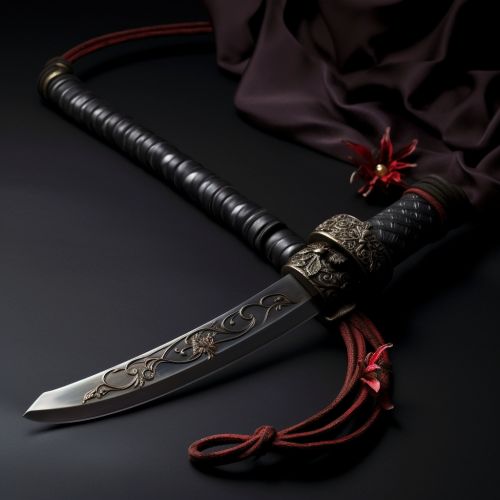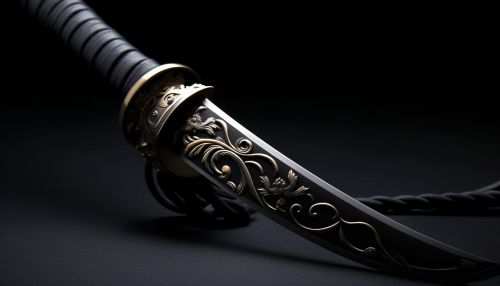Katana
History
The Katana is a traditional Japanese sword with a curved, single-edged blade, circular or squared guard, and long grip to accommodate two hands. It is known for its sharpness and cutting ability, making it a favored weapon of the samurai, the military nobility and officer caste of medieval and early-modern Japan.
The katana originated in the Muromachi period (1392–1573) as a result of changing battle conditions requiring faster response times. The katana facilitated this by being worn with the blade facing up, which allowed the samurai to draw and cut their enemy in a single motion. Previously, the curved sword that the katana evolved from, known as the Tachi, was worn with the edge facing down.


Design
The design of the katana is a result of centuries of refinement to meet the needs of the samurai. The blade is made of a specialized Japanese steel called Tamahagane, which is created from a traditional smelting process that results in several grades of steel with different carbon concentrations. The blade is then constructed by a process of repeated heating, folding and hammering, which removes impurities and ensures an even distribution of carbon throughout the blade. This process also creates the distinctive wavy line down the center of the blade, known as the Hamon.
The curvature of a katana is achieved by a process of differential hardening or quenching. The spine of the sword is coated with a thicker layer of clay than the edge, causing the blade to cool more slowly during quenching. This results in a harder edge and softer spine, giving the blade its characteristic curve.
The hilt or handle of a katana is made from wood, wrapped in ray skin and then wrapped in silk or cotton cord. This provides a solid grip and prevents the sword from slipping out of the hand during use. The guard, known as the Tsuba, is typically made of iron or steel and can be ornately decorated with various designs.
Use
The katana is primarily used for cutting, with the curve of the blade facilitating a smooth slicing motion. The sharpness and strength of the blade allows it to cut through many materials with ease. However, the katana is not just a weapon, but also a work of art and a symbol of the samurai's honor and duty.
The use of the katana is associated with the martial art of Kenjutsu, the classical art of Japanese swordsmanship. Kenjutsu techniques include cutting, thrusting, and parrying, with an emphasis on precision and efficiency of movement. The katana is also used in Iaido, a martial art that focuses on the smooth, controlled movements of drawing the sword, striking an opponent, removing blood from the blade, and then replacing the sword in the scabbard.
Cultural Significance
The katana holds a significant place in Japanese culture, symbolizing the samurai's bravery, honor, and discipline. It is often seen as a symbol of the samurai spirit and is deeply associated with the concept of Bushido, the samurai code of honor. The katana is also considered a work of art, with the craftsmanship and skill required to create a katana highly respected in Japan.
Modern Day
Today, the katana continues to be revered for its design and craftsmanship. While it is no longer used as a weapon, it is practiced in martial arts and collected for its artistic value. The creation of a katana by traditional methods is considered a sacred process and is often performed by highly skilled artisans known as Tosho or swordsmiths. These craftsmen follow the same techniques that have been passed down for centuries, preserving the art of katana making.
